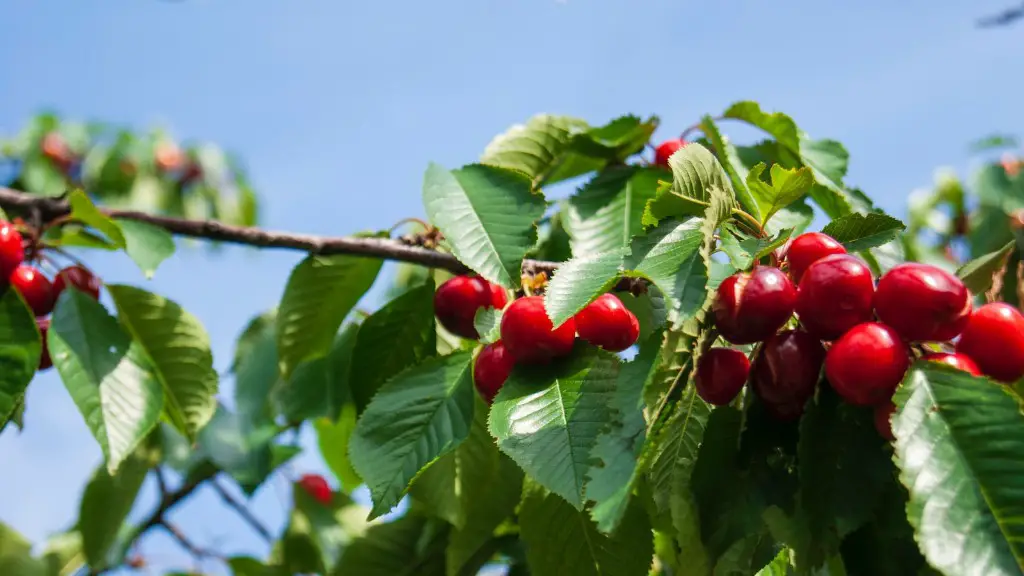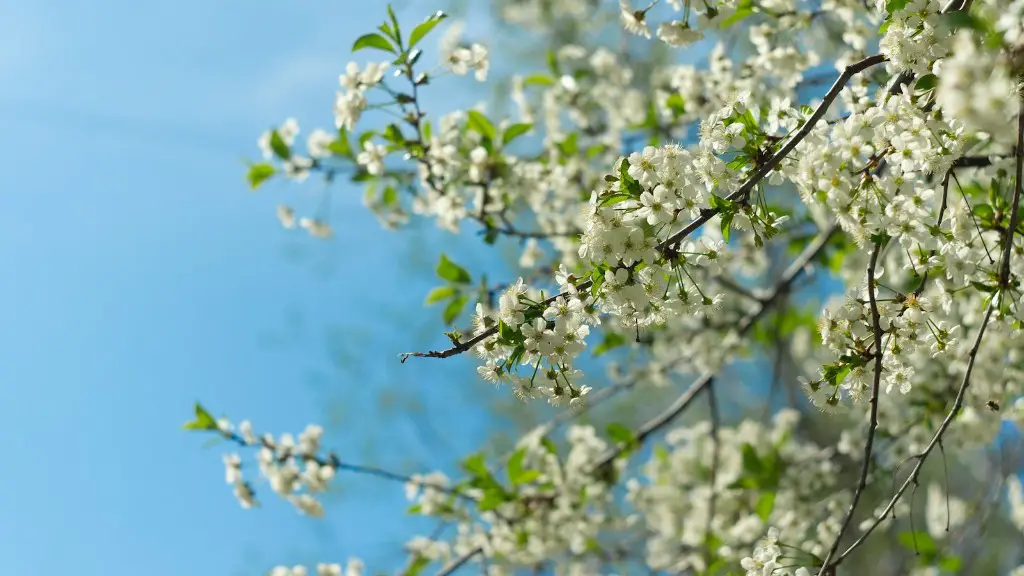How to Get an Avocado Tree
Though somewhat temperamental and challenging to grow, the avocado is an incredibly rewarding tree to own. With its deep, glossy leaves and bright, pearlescent fruit, the avocado tree is a stunning addition to any garden or patio. The unique and exotic flavors of a home-grown avocado also make it especially prized among gardeners. If you would like to know how to get an avocado tree of your own, read on!
One of the first things to consider when looking for an avocado tree is where to find one. Gardening stores, farmers markets, and nurseries all offer a wide variety of avocado varieties. If you want to buy an avocado tree online, you can find a variety of online nurseries that specialize in exotic fruit trees. This can be a convenient and cost-effective way to purchase an avocado tree.
When shopping for a tree, it is important to know the types of avocado trees. Each type has different characteristics and requirements that could affect the success of your plant. Most common types include Fuerte, Bacon, Zutano, Reed and Pinkerton. Here are some key differences to consider:
- Fuerte: This is a cold tolerant tree; it flourishes best in temperatures between 45 and 55 degrees. The fruits of this variety tend to have a smooth yellow-green skin.
- Bacon: This variety is known to have large, oval-shaped fruits. It is known to be more tolerant of colder climates, as it can survive at temperatures down to 28 degrees.
- Zutano: The Zutano produces an oval fruit with a dimpled purple skin. It requires temperatures of 30 to 36 degrees as well as light, sandy soil.
- Reed: This type is the most cold-tolerant of all varieties, withstanding temperatures as low as 24 degrees. This is the most common type of avocado tree.
- Pinkerton: This variety produces slightly smaller, dark-skinned fruits. It can tolerate temperatures as low as 25 degrees.
It is also important to note that avocado trees depend on a healthy growth environment with adequate levels of light, air, and soil. When Choosing a location, make sure to pick a spot with full sun exposure and with good air circulation. When it comes to the soil, select soil that is light and well-endowed with organic matter to retain moisture.
When planting an avocado tree, it is important to keep in mind that the tree may remain dormant for the first few months before establishing healthy growth. It is highly encourage to water the tree consistently and promote healthy soil. Once the tree does begin to grow, make sure to pay attention to pruning, fertilizing and pest control to ensure the plant’s health. In some cases, you may even need to set up irrigation systems to further maintain the health of the tree.
Growing an avocado tree requires a bit of dedication and patience; however, the rewards are bountiful. If you are looking to get an avocado tree of your own, then be sure to consider the type of avocado tree you want, the environment in which it will grow, and the amount of care required to ensuring the health of your tree.
Buying an Avocado Tree
When looking to purchase an avocado tree, it is important to ensure it has been grown under the right conditions. Look for a young avocado tree that displays signs of healthy growth, such as shiny leaves and a strong stem. Make sure to get a tree that is pest- and disease-free. You can also look for organic options, as organic trees are less likely to be exposed to harmful chemicals or pesticides.
It is also important to check whether the tree has been grafted. Grafting a branch from an existing tree onto a young one means that the new tree will bear avocados that possess the same characteristics as the original. This can be an excellent and cost-effective way to acquire a tree with a desired variety.
Moreover, try to avoid buying a mature tree. When buying a mature tree, there is no guarantee it will thrive in your location. It is also more difficult to control for pests and diseases in older plants. It is safer to purchase a young tree and gradually let it mature in the desired spot.
Finally, ensure you can provide the right environment for the tree. Avocado trees need sunny locations that are protected from strong winds. When selecting a spot, make sure to take the necessary precautions to avoid frost and extreme temperatures.
Caring for an Avocado Tree
When caring for an avocado tree, the primary thing to focus on is providing adequate nutrition. Fertilizing an avocado tree every month or so during the summer can be beneficial. Plants in containers require more fertilization than those growing in the ground.
Make sure to water your avocado tree carefully and consistently. Avocado trees require more water than other plants, so check the soil at least once a week. Also, keep in mind that you should water the tree in the evening or early morning to reduce the chance of evaporation.
It is also important to regularly check the tree for pests and diseases. Look out for signs like yellowing or discolored leaves, wilting, or the presence of foreign insects. If you detect any issues, try to address them right away to reduce the risk of damage to the tree.
Pruning your avocado tree is also vital to its health. Prune regularly to promote growth and improve the tree’s overall shape. When pruning, make sure to only remove dead or dying branches to prevent damage to the tree.
Finally, try to avoid excessive moisture, as this can promote fungal growth and rot. Try to water only when the top few inches of soil are dry, avoiding getting the trunk or leaves of the tree wet.
Proper Harvesting Techniques
When it comes to harvesting avocados, timing is everything. Generally, the fruit is ready to pick when it is dark in color, slightly firm to the touch, and yields slightly when gently squeezed. However, each variety will have different ripening times and arrive at peak ripeness at different times.
When harvesting, it is important to do so gently. Use a pair of pruning shears and cut the fruit away from the tree. Make sure not to tug or pull on the fruit, as this could cause damage to the tree. You can also loop a piece of twine around the fruit and tie it to the branch to give it some extra support as it ripens.
Finally, it is important to note that you should refrain from harvesting unripe avocados. If a fruit is still light green and does not yield when gently squeezed, then it is not yet ready for harvest. Unripe fruits can be easily damaged and can also cause damage to the tree.
Storing an Avocado Tree
When storing an avocado tree, try to avoid putting it in direct sunlight. Avocado trees prefer to be kept in a cooler environment, so look for a spot with indirect sunlight and some shade. Make sure to also keep the tree away from any heat sources.
The tree should also remain out of reach of animals and pests. When transporting your tree, make sure to wrap it in burlap or sheet plastic to protect it from the elements. If the tree needs to be shipped, ensure it is well-protected with adequate padding and insulation.
It is also important to check that your tree is disease-free before storing it. If your tree is infected, then give it some treatment to rid it of the infection before you put it away. Insecticides, fungicides, and other treatments may be necessary.
Finally, make sure to routinely examine and clean your tree before storing it away. Check for any dead or dying branches, damaged leaves, and pests. Clean the tree using something like a soft brush and remove all debris. Taking the time to properly store your avocado tree can help it remain healthy and safe until it is ready to be replanted.
Maintenance and Replanting
Avocado trees need to be maintained and replanted regularly to ensure they remain healthy and productive. Young trees should be transplanted every three to four years, while older trees should be replanted every six to eight years. When replanting, ensure to ensure the tree is in a suitable environment with adequate levels of light, air, and soil.
It is also important to make sure the tree is pruned regularly. Pruning helps maintain the tree’s health and encourages new growth. When pruning, make sure to only remove dead or dying branches to prevent damaging the tree.
Furthermore, it is important to keep a close eye on the tree for signs of pests and diseases. If you detect any issues, try to address them quickly to avoid further damage. Insecticides, fungicides, and other treatments may be necessary.
Finally, check that your tree has sufficient water and nutrition throughout the year. Fertilize and water the tree in summer and check the soil regularly for moisture levels. Do not water the tree in the evening or early morning to reduce the chance of evaporation.




